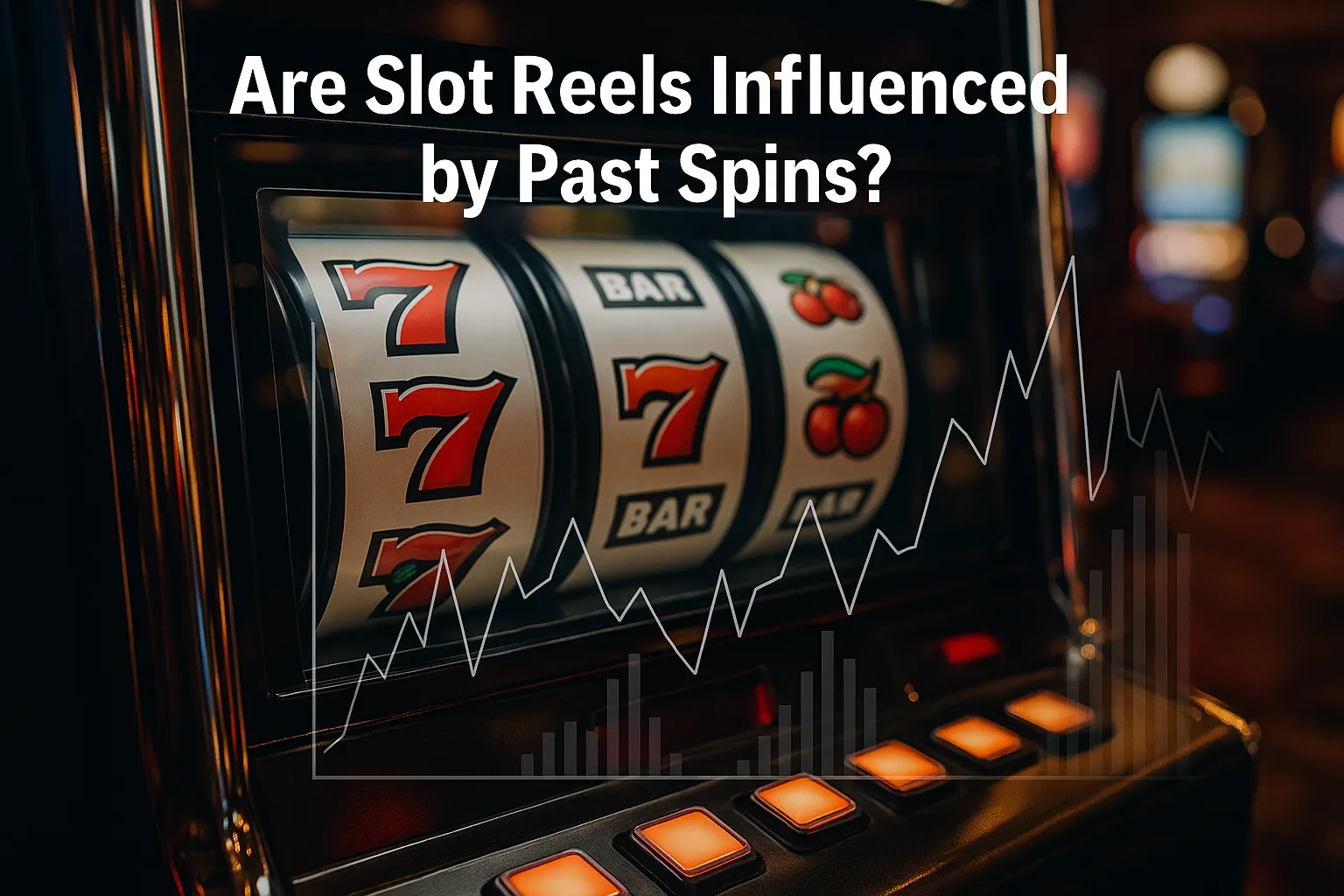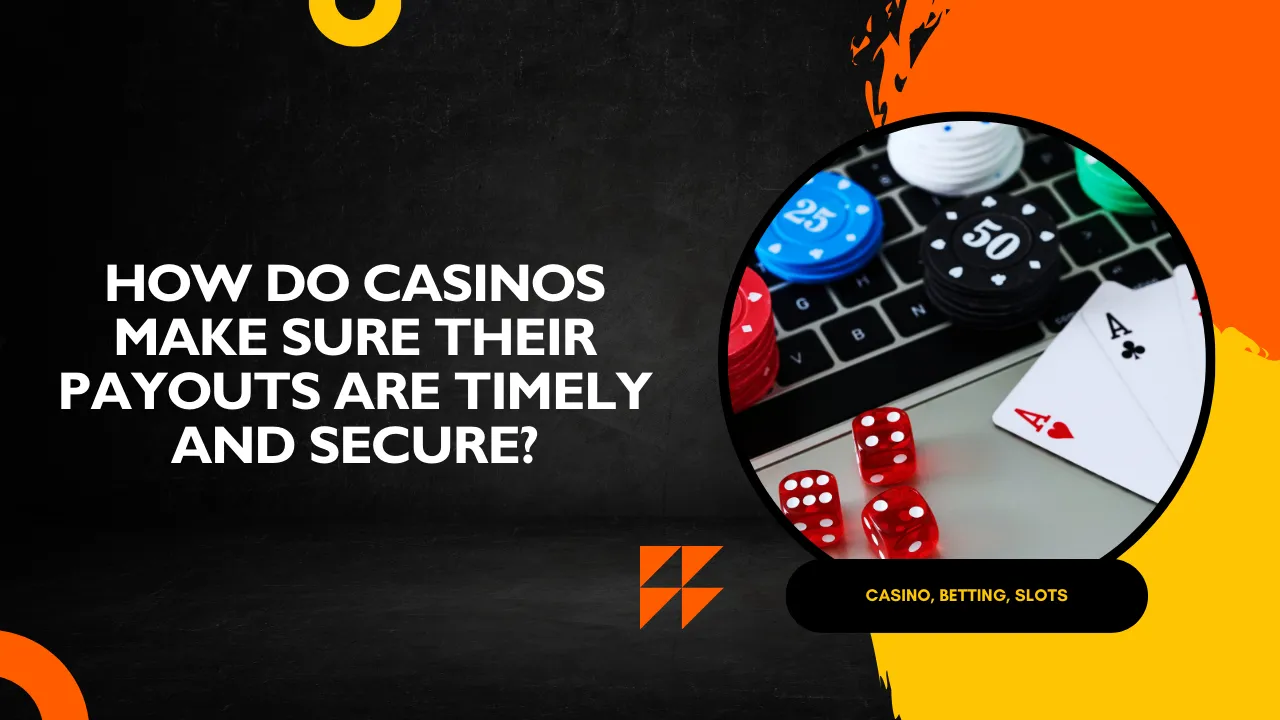When you watch a slot reel land three high-value symbols just one position above the payline, it’s tempting to feel the machine is “building up” to something. I’ve sat beside players who swear the next spin is “due,” others who halt after a big bonus believing the machine is now “cold,” and still others who chase near misses as if the reels are gradually aligning. This article strips away superstition and explains, with practical clarity, how modern slot outcomes are actually produced—and where a few edge-case mechanics do change future potential (but not in the way most people assume).
The Core Question: Do Previous Spins Affect the Next One?
Short answer: On regulated, modern online and land-based slots that use certified pseudorandom number generators (PRNGs), each spin is independent—previous results do not bias or weight the next outcome. Independence is a design prerequisite enforced by testing labs (e.g., eCOGRA, GLI, iTech Labs) and regulators; if prior spins altered probability without declared mechanism, the game would fail compliance audits. Independence is what keeps the theoretical return to player (RTP) true over long samples rather than being manipulated on the fly to “compensate” for streaks. The slot is not tracking that you are “owed” a win after losses, nor is it “protecting” itself right after a big payout.
In the third paragraph—because placement matters for you and for linking practice—let’s ground this discussion in wider betting literacy. A lot of myths about pattern prediction spill over from other verticals, whether that’s live sports, esports, or emerging niches such as crypto cricket betting sites where people also look for sequences or momentum to exploit. The underlying principle carries across: unless the rule set or published mechanic explicitly creates conditional probabilities, assuming memory in a random system leads to flawed decisions.
How the RNG Actually Chooses Symbols
A PRNG cycles through a vast numeric sequence many thousands (often millions) of times per second. When you press “Spin,” the client or server (depending on architecture) queries the RNG at that precise microsecond; the integer (or group of integers) returned maps onto reel stops according to a paytable and virtual reel strip logic. Change the moment you pressed by even a fraction of a second and you’d almost certainly map to a different combination. Because of that microsecond sensitivity, superstitions about rhythm tapping or “stopping the reels” are psychologically engaging but technically irrelevant.
Virtual Reels and Weighting
Classic mechanical machines had fixed physical reel strips with limited symbol counts. Modern video slots use virtual reels where high-value symbols may be assigned fewer stops than low-value ones, preserving advertised volatility. This weighting is static, embedded in the math model; it does not self-adjust after wins or losses. What can differ spin to spin is which seed state the PRNG occupies at the instant of sampling, but that’s not influenced by what just paid—it’s influenced by ongoing deterministic computation plus entropy inputs (if any) well outside your control.
The Illusion of “Almost”
Near misses are engineered through distribution of symbol stops. If a top jackpot symbol appears frequently just above or below a payline over a large sample, players may perceive progression, yet those instances are simply a byproduct of weighted positioning, not a teaser routine learning your play.
Edge Cases: When the Future Does Depend on the Past (Sort of)
There are limited, declared mechanics where state persists between spins. Understanding these prevents conflating legitimate progressive features with mythical “due cycles.”
Progressive Jackpots
In networked or local progressive games, the jackpot meter grows with coin-in until someone hits. Your spin’s chance of triggering the jackpot is usually independent of immediate past outcomes, but the current jackpot size (a variable influenced by cumulative past betting) can alter effective expected value (EV). Some “must-hit-by” jackpots publish a range (e.g., must drop before £5,000), which does shift probability upwards as the cap approaches. That’s not memory of your losses; it’s an increasing drop-weight as part of transparent design.
Feature Meters & Collection Mechanics
Games with collection elements (collect X tokens for a bonus) maintain a counter. Your previous spins contribute to that meter, so your position in the feature path depends on past results. However, the randomness of each token appearing remains independent. The meter simply gates when an ancillary feature will trigger.
Cascading / Avalanche Windows
In tumbling slots, one paid spin can generate multiple cascade outcomes. The subsequent cascades are triggered by the earlier result but each symbol refill is another independent RNG sample. Players sometimes extend this chain mentally into the next paid spin; they are unrelated.
Adaptive Volatility Modes (Rare)
A handful of experimental or niche titles let players choose or toggle volatility modes (e.g., “Classic,” “Extreme”). If you switch, you change the active reel set or distribution for future spins—but the switch is a conscious setting change; the machine isn’t secretly shifting volatility after a win streak.
Land-Based Legacy “Compensation” Machines
Older (now largely phased out in regulated markets) amusement-with-prize (AWP) or skill-with-prize (SWP) machines in some jurisdictions historically used “compensation” logic to align actual payout with target percentage by subtly weighting future outcomes. Modern regulated casino slots, especially online, may not employ this model; it’s important not to project outdated arcade paradigms onto current RNG-certified games.
Cognitive Biases Feeding the “Influenced Reels” Myth
Gambler’s Fallacy
Believing a deviation (e.g., a long losing streak) increases the chance of the opposite result on the next independent trial. Slots, like fair roulette spins, do not “rebalance” short-term.
Hot-Hand Fallacy
Interpreting a cluster of wins as evidence of a “hot” machine. Clusters appear naturally in random distributions; variance ensures they’re statistically inevitable.
Near-Miss Effect
Neurological studies have shown near misses can stimulate reward pathways almost like real wins, reinforcing continued play. Designers obey regulations but can place certain symbol frequencies such that near misses remain an ordinary mathematical artifact.
Illusion of Control
Stopping reels early (aesthetic “skill stop”) fools the brain into attributing agency. The RNG decision is already locked the moment you initiated the spin.
Practical Player Guidance
The actionable mindset shift is from pattern hunting to bankroll and feature state management. While you can’t influence probability, you can select games whose structural elements align with your goals:
-
Volatility Alignment: High-volatility slots bank results in fewer, larger hits. If you misinterpret dry spells as a machine “cooling,” you may abandon a game whose expected variance profile is operating normally.
-
RTP Transparency: Published RTP (sometimes multiple selectable configurations) tells you long-run theoretical retention. It’s not a short-run prediction, so a 96.2% RTP game can still devastate a session quickly.
-
Feature Proximity Evaluation: If a game tracks collectables toward a bonus, note your effective remaining cost to unlock. Do not escalate bet size irrationally because you’re “deep in”—evaluate incremental EV: additional wager × house edge versus estimated bonus value.
-
Must-Hit-By Strategy: For jackpots with a declared upper bound, your incremental EV may improve when the pot nears that threshold. That’s a structural shift, not memory; use it rationally, factoring variance and contribution rate.
Misinterpretations of RTP “In Real Time”
Players often complain “This game is tight today” after 40 cold spins. At 3 seconds per spin, that’s merely 2 minutes of sampling—statistically meaningless. Even 1,000 spins barely begins to converge toward long-run RTP due to variance. Trying to infer a trend from micro-samples is akin to claiming a biased coin after three tails.
Session Clustering
If you record multiple bonus rounds close together, it’s not that the machine “decided” to turn generous; clustering is normal in Poisson-like event distributions. React by following your pre-set bankroll plan, not by increasing stake under a “ride the wave” narrative.
Responsible Play and Algorithmic Transparency
Trust improves when operators publish volatility, hit frequency, bonus frequency, and RTP ranges. Some jurisdictions now require multi-denomination transparency because configuration can adjust hold percentage. As consumers grow more data literate (borrowing analytic attitudes from sports or even blockchain betting verticals), demand for standardized disclosure will rise. Reject sites that obscure core metrics or intertwine wagering incentives with misleading claims about “warming up.”
Lessons From Other Random Domains
Lottery draws, shuffled card shoes (before depletion), and VRF (verifiable random function) outcomes in blockchain games all reinforce a core principle: a properly implemented randomness source doesn’t carry emotional debt. Importing predictive habits from trend-based environments (like form analysis in cricket markets) into slot RNG evaluation is a categorical mistake. Skill edges exist where information asymmetry or modeling skill applies; in slots, edges for ordinary players come only from promotions, loyalty programs, or selecting higher-RTP titles—never from forecasting symbol sequences.
Debunking Common Player Claims Quickly
“Three bonuses have not appeared yet, it’s primed.” – Random outcomes don’t self-correct on a schedule.
“It paid big—lower the stake now because it’ll dead spin.” – Post-win probability is unchanged; reducing stake may be prudent for variance control, not because of a probability drop.
“I can feel the timing—tap the spin when reels slow.” – The RNG outcome is locked earlier; the visual spin is presentation.
“Look how the wilds walked up; next spin they’ll land again.” – Unless a persistence mechanic states that wilds carry over (e.g., sticky wilds), each placement is independent.
Building a Rational Slot Session Plan
-
Define Loss Limit & Target: Precommit before emotion intrudes.
-
Select Game by Volatility & Feature Interest: Not by recent anecdotal “hot” reputation.
-
Track Feature States Only Where Persistent: Collection meters, free-spin progress (if game stores fragments).
-
Ignore Recency Noise: Evaluate fun per unit wager, not pattern illusions.
-
Exit Criteria: Leave when budget consumed or entertainment objective met, not when you feel a reversal is imminent.
Final Thoughts
The probability engine behind modern slots is ruthlessly amnesiac. Past spins supply context only for explicit, declared persistent features or jackpot meters—not for underlying symbol probability. Embracing that truth guards you against cognitive traps, reduces tilt-induced chasing, and re-centers your approach on budget discipline and game selection rather than phantom signals. Enjoy the audiovisual spectacle, respect the mathematics, and let go of the seductive—but costly—belief that the reels remember




